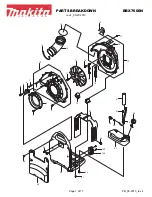
General Information
Operating Principle
1
1-3
Operating Principle
Deadweight Testers are the primary standard for pressure measurement. Utilizing the
well-proven Piston-Gauge system, consisting of a vertically mounted, precision lapped
Piston and Cylinder assembly, accurately calibrated weight masses (Force) are loaded on
the piston (Area), which rises freely within its cylinder. These weights balance the
upward force created by the pressure within the system.
AREA
FORCE
PRESSURE
=
Each weight is marked with the tester serial number, and the pressure measured when
placed on a correctly spinning and floating piston. The total pressure measured is the
summation of the weights plus the piston weight carrier assembly.
The schematic diagram below shows the basic hydraulic circuit for a dual-PCU (Piston
Cylinder Unit) instrument.
The system is primed with liquid from the Reservoir, and the system pressure is increased
by means of the Screw Pump. As liquids are considered incompressible, the displaced
liquid causes the pistons to rise within their cylinders to balance the downward force of
the weights.
Fluids at the same height in a system are at the same pressure, so when the system is in
equilibrium (i.e. the piston and weights are floating freely, rotating and falling at its
natural sink-rate), the pressure generated by the combined mass of the piston and weights
equals the pressure within the device under test.
The design of a Piston/Cylinder Unit (PCU) fitted to a deadweight tester allows for a very
small clearance gap between the piston and cylinder. This is required to allow the
working fluid to pass between the components, providing a lubricating film, and
preventing metal-to-metal contact.
Therefore, during the normal operation of a deadweight tester, the working fluid in the
system will slowly pass through this clearance gap. This is perfectly normal, and there are
Sump Rings around the piston bodies to collect the excess fluid.
Although calibration is carried out using one PCU at a time, there is a point during
normal operation of a dual-PCU instrument where both PCUs will rise. This is due to the
overlap in pressure range of the two PCUs. The PCU that is not in use will seal in the
fully extended position to avoid additional fluid loss.
Содержание P3100 Series
Страница 5: ...Contents continued iii Pointer Remover Punch P5551 9 2...
Страница 6: ...P3100 P3200 Series Users Manual iv...
Страница 8: ...P3100 P3200 Series Users Manual vi...
Страница 10: ...P3100 P3200 Series Users Manual viii...
Страница 18: ...P3100 P3200 Series Users Manual 1 8...
Страница 24: ...P3100 P3200 Series Users Manual 2 6...
Страница 26: ...P3100 P3200 Series Users Manual 3 2...
Страница 30: ...P3100 P3200 Series Users Manual 4 4...
Страница 32: ...P3100 P3200 Series Users Manual 5 2...
Страница 54: ...P3100 P3200 Series Users Manual 7 4...
Страница 56: ...P3100 P3200 Series Users Manual 8 2...














































